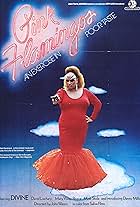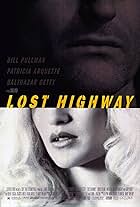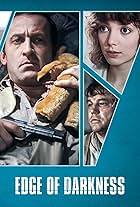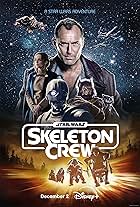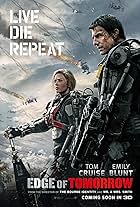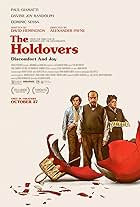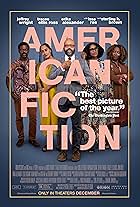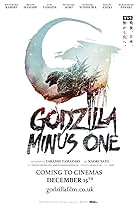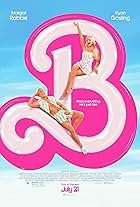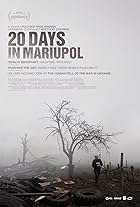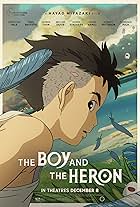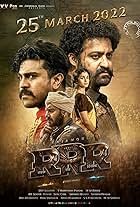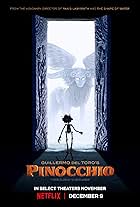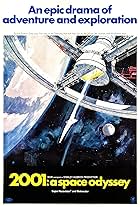
tobydale
Joined Sep 2010
Welcome to the new profile
We're still working on updating some profile features. To see the badges, ratings breakdowns, and polls for this profile, please go to the previous version.
Ratings379
tobydale's rating
Reviews186
tobydale's rating
Back in 1972, a film like Pink Flamingos might have been made to deliberately shock and inflame - to draw attention and attempt to make a name for its creators.
Pink Flamingos might be attempting something- sure - but what it "achieves" is something else....
Pink Flamingos is crass, tasteless, artless, banal, disgusting, lewd, but above all - it's pointless. It's one giant nothing. Pornography dressed up as "something".
There's trash - but Pink Flamingos isn't even trash. It doesn't qualify even as trash. It's utter nonsense.
Seen today, in 2025 after decades of movement, development and acceptance in cinema, Pink Flamingos is even more irrelevant and more pathetic and pointless than ever.
I'd give it zero if it was possible.
Pink Flamingos might be attempting something- sure - but what it "achieves" is something else....
Pink Flamingos is crass, tasteless, artless, banal, disgusting, lewd, but above all - it's pointless. It's one giant nothing. Pornography dressed up as "something".
There's trash - but Pink Flamingos isn't even trash. It doesn't qualify even as trash. It's utter nonsense.
Seen today, in 2025 after decades of movement, development and acceptance in cinema, Pink Flamingos is even more irrelevant and more pathetic and pointless than ever.
I'd give it zero if it was possible.
Just come out of The Brutalist, and I'm carrying mixed feelings. But I think this is what was intended: we're supposed to see someone who has been brutalised, and the effect of this brutalises US. That's the idea, I think. And it works.
It's a pity that there seem to be a lot of haters posting low ratings and down thumbs. These people must have short attention spans and not be able to recognise a good film when they see one... All completely unnecessary.
The Brutalist portrays the experiences of a fictional character László Tóth (Adrian Brady), a Hungarian-Jewish architect arriving in America from Germany soon after the end of World War II. What unfolds is his journey. Although highly engaging, it does not make for pleasant watching at times.
The Brutalist reminds us of the style of the architecture: built in blocks, that may not appeal to everyone's taste. Again like the architecture, this is a film that tells its different stories in ways you're not necessarily expecting or ready for.
Guy Pearce is Harrison Lee Van Buren - who becomes the architects patron for a huge commission. Felicity Jones is Erzsébet Tóth, László's wife - who, by virtue of Van Buren's connections, eventually makes her way from Europe to join her husband.
There could very easily be Oscars for all three of the central players. Brady is magnificent as the architect. He sort of reprises his role in The Pianist. This is Guy Pearce's best performance since Memento. As for the rest: Photography is good, script OK, sound/music good.
The Brutalist is a good film, one that presents many different meanings and messages. It comes off a 10/10 rating for me for two reasons. One: there is a gratuitous scene in section 2 that is both unnerving and story wise, completely unnecessary. Two: this is not a true story - it's an agglomeration. It could have been true - hell there are literally millions of survivors of WW2 - victims who wanted a new life, but they couldn't get one. Instead the abuse continued. Any one of those true stories could have been told, but it wasn't. What we have in The Brutalist, again rather like in the architecture, is an "artful representation".
See The Brutalist and decide for yourself what it tells you.
It's a pity that there seem to be a lot of haters posting low ratings and down thumbs. These people must have short attention spans and not be able to recognise a good film when they see one... All completely unnecessary.
The Brutalist portrays the experiences of a fictional character László Tóth (Adrian Brady), a Hungarian-Jewish architect arriving in America from Germany soon after the end of World War II. What unfolds is his journey. Although highly engaging, it does not make for pleasant watching at times.
The Brutalist reminds us of the style of the architecture: built in blocks, that may not appeal to everyone's taste. Again like the architecture, this is a film that tells its different stories in ways you're not necessarily expecting or ready for.
Guy Pearce is Harrison Lee Van Buren - who becomes the architects patron for a huge commission. Felicity Jones is Erzsébet Tóth, László's wife - who, by virtue of Van Buren's connections, eventually makes her way from Europe to join her husband.
There could very easily be Oscars for all three of the central players. Brady is magnificent as the architect. He sort of reprises his role in The Pianist. This is Guy Pearce's best performance since Memento. As for the rest: Photography is good, script OK, sound/music good.
The Brutalist is a good film, one that presents many different meanings and messages. It comes off a 10/10 rating for me for two reasons. One: there is a gratuitous scene in section 2 that is both unnerving and story wise, completely unnecessary. Two: this is not a true story - it's an agglomeration. It could have been true - hell there are literally millions of survivors of WW2 - victims who wanted a new life, but they couldn't get one. Instead the abuse continued. Any one of those true stories could have been told, but it wasn't. What we have in The Brutalist, again rather like in the architecture, is an "artful representation".
See The Brutalist and decide for yourself what it tells you.
I'm a life-long Beatles fan and I really liked this.
It's not easy to reach back, travelling in time back 60 years. Even if you did, you'd find it hard very hard to take in your surroundings. You wouldn't know what was going on if you travelled from 2001 back to 1941. You wouldn't have a clue. The Beatles '64 shows us, today, what America was like in early 1964. That's 61 years ago.
It's quite a journey!
As Paul McCartney tells us late on in this excellent show, The Beatles first trip to the US was just 12 weeks after the assassination of JFK. He said he felt the pain, even as a Brit, and that he thought America "needed a lift".
Imagine also, The Beatles themselves travelling to this fabled land of America - home of Gospel, Rhythm & Blues, Soul and Rock & Roll and Elvis! They'd heard the music - and worshipped it, studied it, loved it, made their lives in music around it. But they'd never been there. How amazing would that be for them!? Well - now we know!
The Beatles '64 shows us, via simple black & filming made by a traveler who went with them, just what their journey was like. It's revealing, engaging and a great watch. We find out a lot about the differences between America & the UK in the mid-60s, and we especially find out about the reactionary conservative nature of America and how change was feared. But The Beatles are talked about by those who grew up with them. Their view is that The Beatles were something new - completely new, but not macho or imposing and not a threat at all. I liked these observations.
Along the way, we hear from The Beatles themselves, and others, about how they came to view this event later on in their lives. Brilliantly, we also see David Lynch (bless you & RIP) tell of his experience of going to a 1964 Beatles gig. It's great stuff!
This piece was masterminded by Martin Scorsese, and it shows. Also deeply involved are Ringo & Paul. The wider families are also involved including Sean Lennon - and that's great because we get a rounded view.
This is like travelling back in time. I thought The Beatles'64 was great!
It's not easy to reach back, travelling in time back 60 years. Even if you did, you'd find it hard very hard to take in your surroundings. You wouldn't know what was going on if you travelled from 2001 back to 1941. You wouldn't have a clue. The Beatles '64 shows us, today, what America was like in early 1964. That's 61 years ago.
It's quite a journey!
As Paul McCartney tells us late on in this excellent show, The Beatles first trip to the US was just 12 weeks after the assassination of JFK. He said he felt the pain, even as a Brit, and that he thought America "needed a lift".
Imagine also, The Beatles themselves travelling to this fabled land of America - home of Gospel, Rhythm & Blues, Soul and Rock & Roll and Elvis! They'd heard the music - and worshipped it, studied it, loved it, made their lives in music around it. But they'd never been there. How amazing would that be for them!? Well - now we know!
The Beatles '64 shows us, via simple black & filming made by a traveler who went with them, just what their journey was like. It's revealing, engaging and a great watch. We find out a lot about the differences between America & the UK in the mid-60s, and we especially find out about the reactionary conservative nature of America and how change was feared. But The Beatles are talked about by those who grew up with them. Their view is that The Beatles were something new - completely new, but not macho or imposing and not a threat at all. I liked these observations.
Along the way, we hear from The Beatles themselves, and others, about how they came to view this event later on in their lives. Brilliantly, we also see David Lynch (bless you & RIP) tell of his experience of going to a 1964 Beatles gig. It's great stuff!
This piece was masterminded by Martin Scorsese, and it shows. Also deeply involved are Ringo & Paul. The wider families are also involved including Sean Lennon - and that's great because we get a rounded view.
This is like travelling back in time. I thought The Beatles'64 was great!
